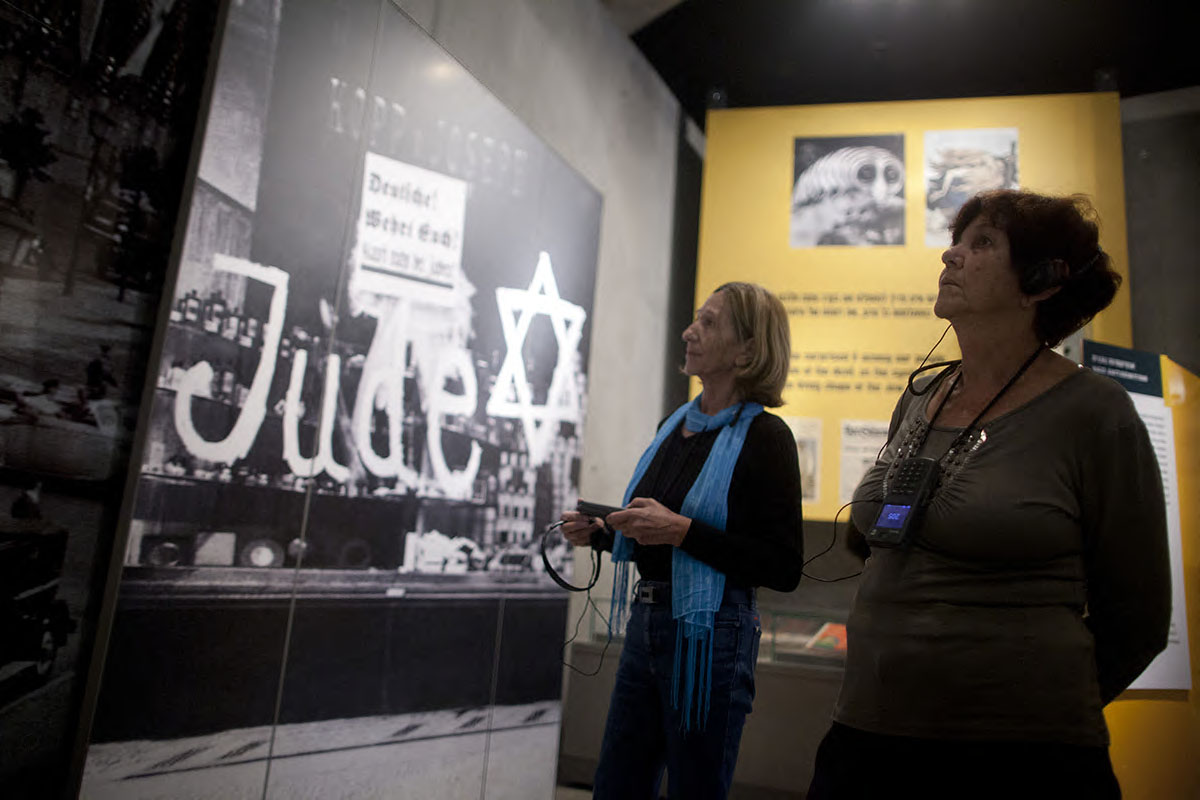Jakób Krzepicki, 1915-1943
Jakób Krzepicki was one of the few eye-witnesses who documented the atrocities committed at the Treblinka extermination camp in real time. He was born in the town of Praszka, in the Lodz district of Poland, and grew up in Gdańsk, where he was active in the "Hanoar Hazioni" movement and worked with his father in the textile trade. He was drafted into the Polish Army in 1938. In the battles that raged with the outbreak of World War II, he fell into German captivity and was held in the Lublin area. After his release he reached Warsaw, where he learned from correspondence with his family that they had attempted to immigrate to Eretz Israel (Mandatory Palestine) on the "Atlantic", but were caught by the British and exiled to Mauritius. Incarcerated in the Warsaw ghetto, Krzepicki continued to be active in the youth movement, and worked in an artificial honey factory at 19 Zamenhof Street. On 25 August 1942, during the Great Deportation in which over 300,000 ghetto Jews were deported to Treblinka, Krzepicki was caught at the factory, brought to the Umschlagplatz (assembly point) and deported to the extermination camp. After 18 days in Treblinka, Krzepicki escaped on a train filled with victims' clothes and returned to the Warsaw ghetto. Rachel Auerbach, one of the dedicated workers on the "Oneg Shabbat" clandestine archive that documented Jewish life under the Nazi regime, interviewed him over the course of three months. She wrote down his account in a document numbering over 300 pages entitled, "A Man Escaped from Treblinka". She added her own foreword and notes to the text.
This manuscript is a unique document detailing the suffering of the Jews at the Treblinka extermination camp and on their voyage there. The indescribable conditions in the cattle cars, the swift separation of family members upon their arrival at the camp, the murder process, camp life and other aspects are described accurately and in minute detail.
"The time was about five PM […] One of the Germans ordered: Women and children – to the left, men – to the right […] Within a few minutes we already heard the terrible screams […] We, the men, were ordered to sit outside next to the right-hand barracks […] An SS man came and selected ten young men from amongst us; he didn't want old men. Some time later, another SS man arrived and demanded 60 men, including me. They stood us in pairs and marched us via the square that we had passed when we got down from the boxcars. From there, we were directed to the right, and found ourselves in a larger square. We were confronted with a horrifying scene: an immense number of corpses laid out one next to the other. There were some 10,000 corpses there in my estimation […] Most of them were the bodies of people who had been asphyxiated by lack of air in the cattle cars […] We saw many Jews busy moving the bodies to massive pits. There were also Jews there who used wagons to transfer the corpses to the pits at the edge of the square. Everything the Jews did was carried out at a run."
While a prisoner at Treblinka, Krzepicki worked in several labor groups: unloading the death trains, burying the dead, sorting through their personal belongings, and cutting down branches that were draped around the camp fence in order to camouflage it. His familiarity with both sections of the extermination camp enabled him to sketch a reliable map of the site. On 11 September 1942, another inmate carried out an act of defiance in the camp. "I stood next to Berliner… I didn't see when and from where he drew the knife. I noticed him for the first time when he launched himself from the line and plunged the knife with all his might into the back of the Scharführer carrying out the selection."
Fearing retribution from the Germans in the form of punitive measures against the Jewish laborers, Krzepicki decided to escape. "An oppressive feeling overwhelmed me. I couldn't for a moment resign myself to the idea that I was to die here. I was consumed by the feeling that I had to do something, that any minute it would be too late."
On 13 September, Krzepicki was sent to load victims' clothes onto a train that was leaving the camp, and he hid inside one of the train cars. During the journey, he jumped from the train and returned to the Warsaw ghetto late that same month, after the Great Deportation was over.
Krzepicki's testimony includes the map that he sketched and a portrait photograph, on the back of which he wrote the addresses of his closest relatives, requesting that they be informed should he not survive.
After his return to the ghetto, Krzepicki joined the Jewish Fighting Organization (ZOB). He fought in the Warsaw Ghetto Uprising together with his fellow youth movement members, under the leadership of Jacob Praszker. On 22 April 1943, the fourth day of the uprising, Jakób Krzepicki was killed in action. The manuscript with his testimony was found in 1950 with the retrieval of the second part of the "Oneg Shabbat" archive, buried underground in the Warsaw ghetto. Since then, his crucial eye-witness account has been published in full and in shortened form in a variety of languages, including Yiddish, Hebrew, Polish and English.









